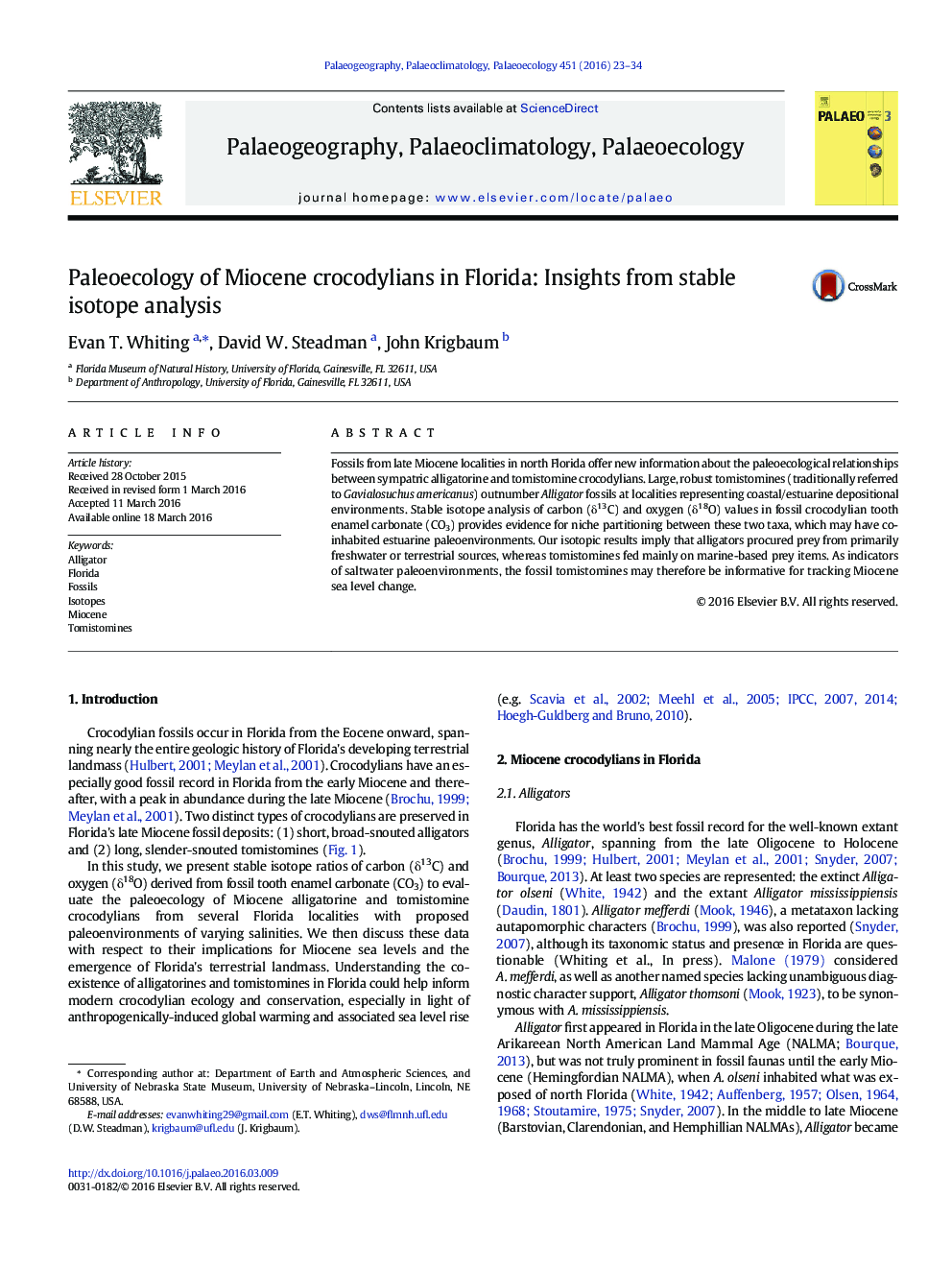| کد مقاله | کد نشریه | سال انتشار | مقاله انگلیسی | نسخه تمام متن |
|---|---|---|---|---|
| 4465713 | 1622140 | 2016 | 12 صفحه PDF | دانلود رایگان |
• Stable isotope analysis differentiates between alligators and tomistomines.
• Alligators and tomistomines may have partitioned ecological niches.
• Miocene alligators in Florida likely fed primarily from freshwater food webs.
• Miocene tomistomines in Florida likely fed primarily from marine food webs.
• Tomistomine presence/absence data can be used as Miocene sea level proxy.
Fossils from late Miocene localities in north Florida offer new information about the paleoecological relationships between sympatric alligatorine and tomistomine crocodylians. Large, robust tomistomines (traditionally referred to Gavialosuchus americanus) outnumber Alligator fossils at localities representing coastal/estuarine depositional environments. Stable isotope analysis of carbon (δ13C) and oxygen (δ18O) values in fossil crocodylian tooth enamel carbonate (CO3) provides evidence for niche partitioning between these two taxa, which may have co-inhabited estuarine paleoenvironments. Our isotopic results imply that alligators procured prey from primarily freshwater or terrestrial sources, whereas tomistomines fed mainly on marine-based prey items. As indicators of saltwater paleoenvironments, the fossil tomistomines may therefore be informative for tracking Miocene sea level change.
Journal: Palaeogeography, Palaeoclimatology, Palaeoecology - Volume 451, 1 June 2016, Pages 23–34
